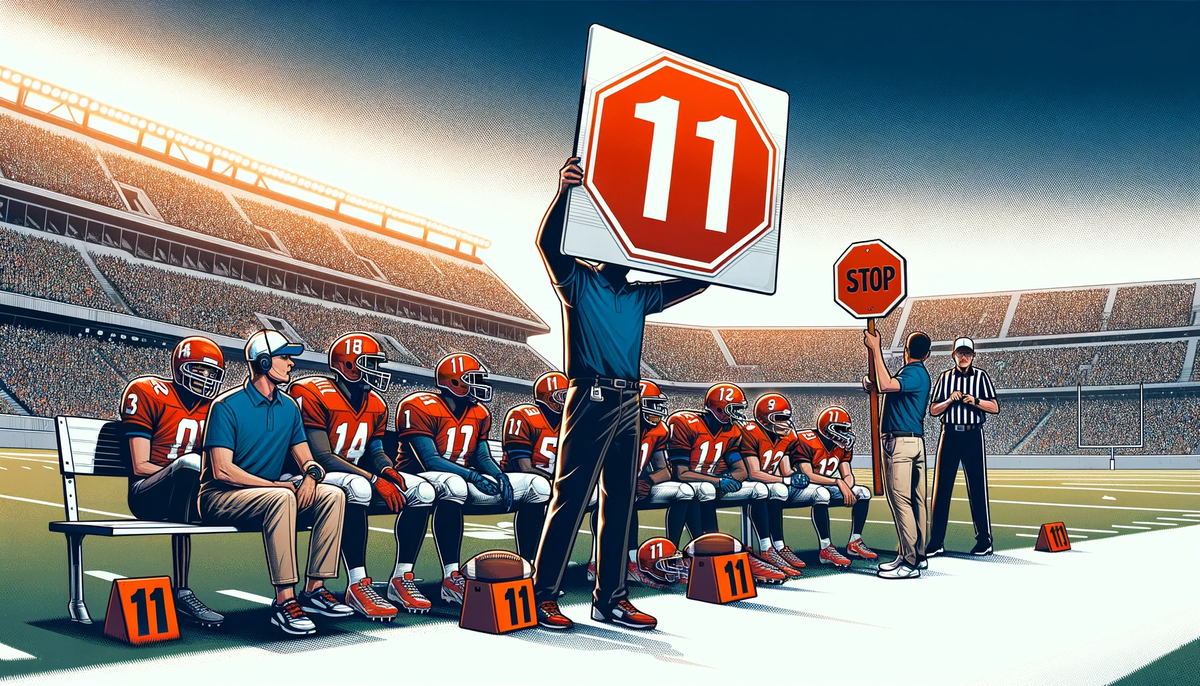Deciphering Football’s Personnel Codes on Offense and Defense

What is 11 personnel? What is nickel defense? These terms, though perhaps esoteric to the uninitiated, are the keys to understanding a layer in the cake of football strategy. Each grouping, from the common 11 personnel to the less frequent grouping of 13 personnel, prompts a specific defensive counter, affecting the strategic framework of the game. Yet, exceptions and situational adaptions are always at play. Here, we unpack how defenses typically match offensive personnel's, the strategy that underpins those matches, and exceptions to the standard.
If you're interested in QB specific throwing, lifting and sprint training, customized to you, with the same systems used to train NFL Quarterbacks, take the assessment and get the app at kinetex.co. If you're interested in reading about all things quarterbacking and throwing biomechanics, subscribe to the blog.
11 Personnel vs. Nickel Defense
11 personnel, consisting of one running back, one tight end, and three wide receivers, is a common offensive package, designed to strike a balance between the passing and rushing game. To counter this, defenses often employ the nickel package. In a typical nickel defense, there are four defensive linemen, two linebackers, and five defensive backs. This alignment ensures that the defense can counter the speed and route-running prowess of the three wide receivers while still maintaining a robust front to defend against the run. The inclusion of an additional defensive back compared to the traditional base defense aids in coverage, enhancing the defense's ability to counteract the offensive playmaking potential inherent in the 11 personnel.
12, 13, and 21 Personnel vs. Base Defense
12 personnel, characterized by one running back, two tight ends, and two wide receivers, 13 personnel with one running back, three tight ends, and one wide receiver, and 21 personnel, featuring 2 running backs (including a fullback), 1 tight end, and 2 wide receivers, all lend themselves to a more run-heavy, physical style of play. The defense typically counters these personnel packages with base defense – typically a 4-3 or 3-4 alignment with four or three defensive linemen, three or four linebackers, and four defensive backs. Note the difference between base and nickel is simply removing a defensive back for an extra linebacker. The rationale is to bolster the frontline defense, ensuring that there is enough physical presence to counter the enhanced blocking and short-yardage threats presented by these offensive sets.
10 Personnel and the Dime/Nickel Defense
10 personnel, featuring 1 running back, 0 tight ends, and 4 wide receivers, is a clear indication of an offensive emphasis on the passing game. Defenses often respond with dime (six defensive backs) or occasionally, nickel defenses. The focus is to counter the offense's speed and versatility with additional coverage, ensuring each wide receiver is adequately covered while still maintaining a semblance of run defense.
The Art of Mismatch and Situational Defense
However, football is not a game of absolutes. The fluidity and complexity of the sport mean that personnel matchups are not always cut and dried. For example, if facing a team with tight ends who are renowned more for their receiving skills than blocking, such as Evan Engram, a defense might opt for a nickel package even against 12 personnel, prioritizing coverage over physicality.
Situational factors significantly influence defensive alignments. On 3rd down and long situations, defenses are less concerned about the running game and focus more on defending the pass. Here, dime packages become more prevalent, even against personnel packages where they wouldn’t traditionally be employed.
Optimization for Talent
Furthermore, the optimization of talent on the field plays a crucial role in deciding personnel packages. A team boasting two elite linebackers might be hesitant to switch to a dime package, preferring to keep their best players on the field. Conversely, an offense with three top-tier wide receivers would be more inclined to utilize 11 personnel to exploit their strengths in the passing game.
Conclusion
In the realm of football, personnel matchups are another element of the overall strategic framework. Each offensive personnel, elicits a specific defensive counter which can change throughout the course of a game. Understanding this layer, either as a coach or player creates an edge in your preparation and ability to react on the fly to the unexpected.
If you're interested in QB specific throwing, lifting and sprint training, customized to you, with the same systems used to train NFL Quarterbacks, take the assessment and get the app at kinetex.co. If you're interested in reading about all things quarterbacking and throwing biomechanics, subscribe to the blog.
